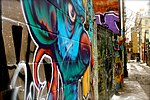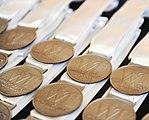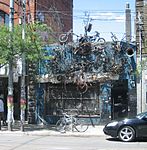Alexandra Park, Toronto

Alexandra Park is a neighbourhood located in downtown Toronto, Ontario, Canada. Alexandra Park is bounded by Dundas Street West on the north, Spadina Avenue on the east, Queen Street West on the south, and Bathurst Street on the west. Alexandra Park consists of private and public housing, with at grade retail along Queen Street West and Spadina Avenue, some institutional, and several commercial buildings scattered through the neighborhood. The neighborhood takes its name from Alexandra Park, a municipal park at the south-east corner of Dundas Street West and Bathurst Street. The park is named for Queen Alexandra, wife of King Edward VII, the first future monarch to visit Toronto.
Excerpt from the Wikipedia article Alexandra Park, Toronto (License: CC BY-SA 3.0, Authors, Images).Alexandra Park, Toronto
Augusta Square, Toronto
Geographical coordinates (GPS) Address Nearby Places Show on map
Geographical coordinates (GPS)
| Latitude | Longitude |
|---|---|
| N 43.65 ° | E -79.4 ° |
Address
Augusta Square 73
M5T 2V5 Toronto
Ontario, Canada
Open on Google Maps









